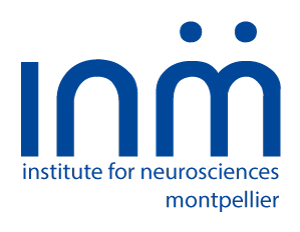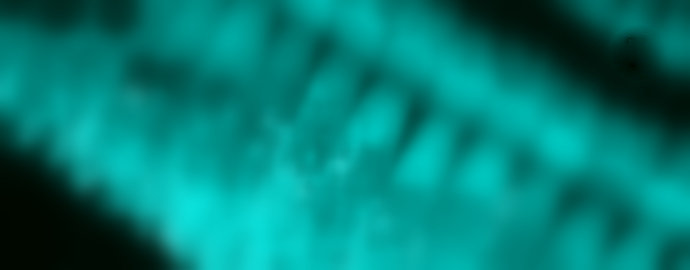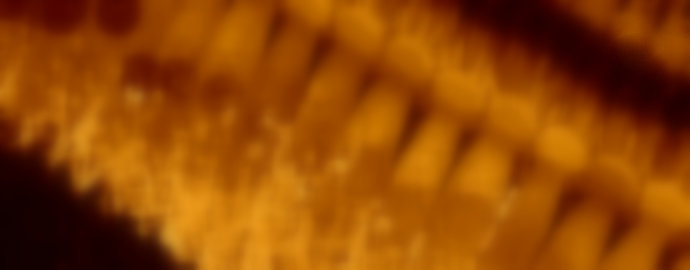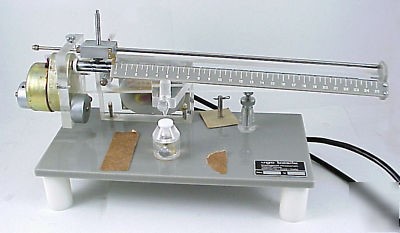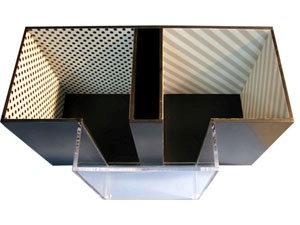The Functional Exploration Platform RAM-INM is specialized in the analysis of in vivo models, mainly murine, reproducing the major sensory and motor pathologies affecting humans: blindness, deafness, tinnitus, vertigo, pain, locomotor and osteo-articular deficits.
Within the platform, 7 independent rooms are dedicated to functional exploration in order to :
Explore the function of the visual, auditory, somatosensory, osteo-articular and locomotor systems.
Develop cell and gene therapy protocols for pre-clinical trials.
The platform is part of the Réseau des Animaleries de Montpellier (RAM), a Biocampus platform.
As such, it is open to the entire academic and private scientific community to host animal models and allow the characterization of their sensory and motor capacities.
EQUIPMENT and RESOURCES
The platform provides behavioral (proprioception, locomotion, vision, hearing, balance) and electrophysiological (vision, hearing) non-invasive analysis systems.
LOCOMOTION
Catwalk®
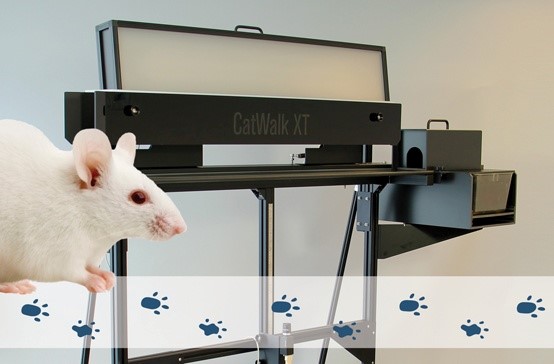

Catwalk® (Noldus Information Technology) allows to measure locomotor deficits due to various pathologies (joint diseases, pain, neurodegenerative disorders) through the analysis of paw prints during spontaneous locomotion.
Automated actimeter
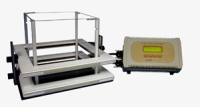
The automated actimeter (Bioseb) measures the overall locomotor activity (activity, rest, distance traveled) in a closed arena scanned by infra-red beams.
Automated videotracking
![]()
Ethovision® (Noldus Information Technology) analyses the overall locomotor activity of animals based on video recordings. It completes and deepens the data acquired with automated actimeter.
Rotarod
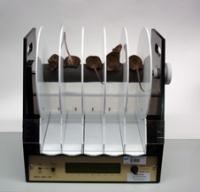
The rotarod (Bioseb) measures the capacity of animals to stay in balance on a rotating cylinder. It is used to phenotype balance, proprioception and locomotor system.
Treadmill
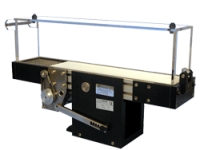
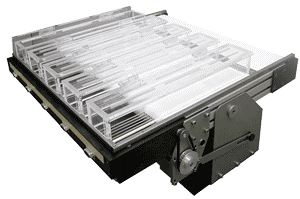
The treadmills (1 and 5 lanes, Bioseb) are designed to train mice to physical exercise. They can be coupled with other tests to detect locomotor deficits or fatigue.
Grip test
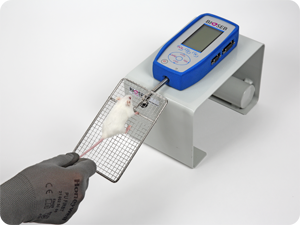
The grip test (Bioseb) measures muscular strength of animals grasping on a metal grid. It is used to phenotype neuromuscular functions.
OSTEO-ARTICULAR DEFICITS
Microscanner
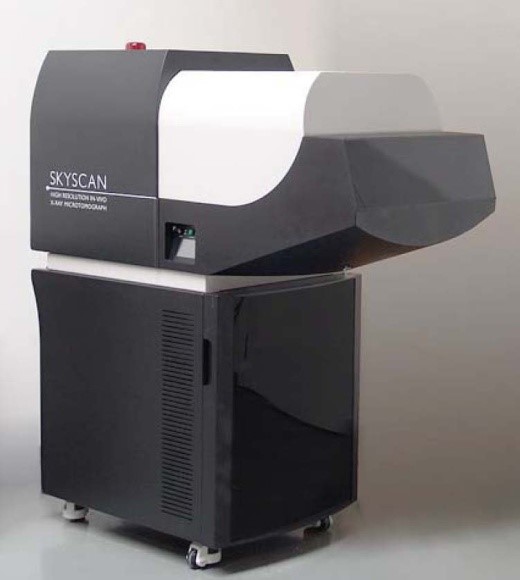
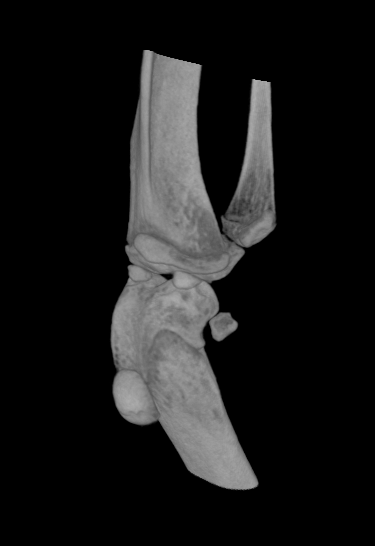
The microscanner SkyScann 1196® (Brucker) allows to perform longitudinal studies of bone and cartilage structures in rodents. It belongs to national platform ECELL France, localized at IRMB. Any project using microscanner needs a preliminary contract or order between user and ECELL France.
SENSITIVITY
Dynamic plantar analgesia and Von Frey
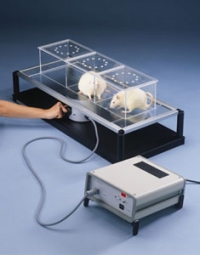
Dynamic plantar analgesia (IITC Life Sciences) and dynamic Von Frey (Bioseb) respectively allow to measure sensitivity to mechanical or thermal stimuli. They are widely used in projects dealing with pain and analgesia following therapeutic treatments.
Thermal Gradient
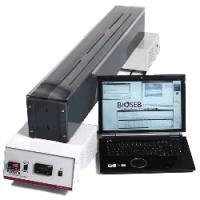
The thermal gradient (Bioseb) measures the comfort temperature of animals, free to move on a metal floor from 5 to 55°C. It is used to phenotype sensitivity and pain.
Static weight bearing
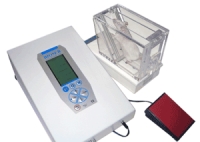
The static weight bearing test (Bioseb) investigates postural imbalance by measuring the difference in left and right paw pressures. It is useful to phenotype sensitivity and pain in hind limbs.
Randall-Sellito
This test (Bioseb) measures the rat sensitivity to mechanical paw pressure on hind paws. It is used to test analgesia following therapeutic treatments.
Conditioned Place Preference (CPP)
CPP (Bioseb), coupled to Ethovision® videotracking system, measures spatial place preference or aversion following conditioned stimulus.
VISION
Optometry
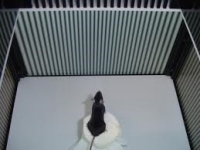
This test (CerebralMechanics Inc.) assesses visual acuity by measuring the ability of mice to visually follow-up vertical bars in motion.
Optical Coherence Tomography
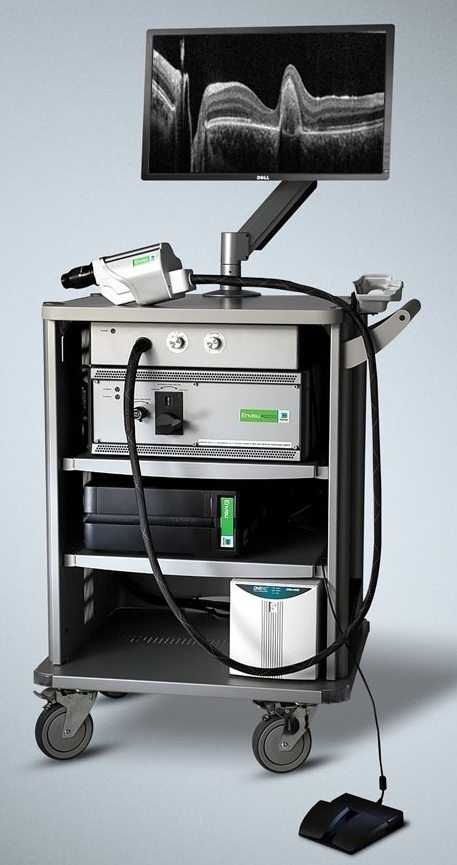
This tomography imaging system (Leica) allows to visualize and measure the thickness of the various retina cell layers to monitor injury or recovery over time.
Retinal imaging microscope
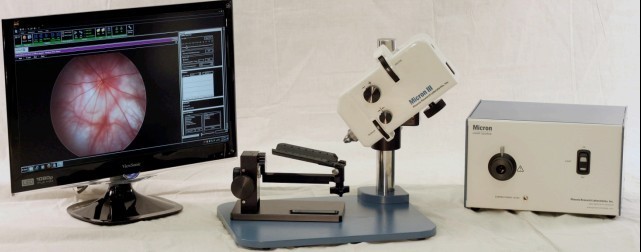
The Micron III microscope (Phoenix Research Laboratories) allows to image retina and blood vessels (bright field and fluorescence).
Electroretinograpy
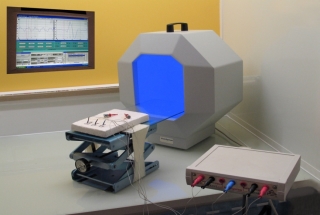
The electroretinogram (SIEM Bio-Médicale) measures the electrical activity of optic nerve and retinal cells (ganglion and bipolar cells, cones and rods).
HEARING
Electrophysiology
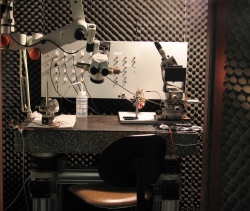
Electrophysiological set ups allow to measure auditory evoked potentials, electrical activity of inner and outer hair cells and otoacoustic emissions. An anechoic chamber is used to isolate animals from surrounding noise.
Startle response
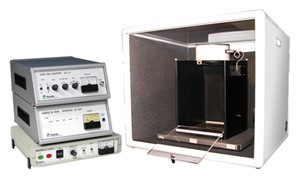
This test is used to study the animal's startle reaction to sound stimulation. It allows to discriminate tinnitus or hearing loss in surrounding noise.
BIOLUMINESCENCE IMAGING
CCD Camera

This equipment (Berthold) is used to detect bioluminescence in vivo. It allows to monitor the expression of reporter genes in tissues or tumor development.
CONTACT
This email address is being protected from spambots. You need JavaScript enabled to view it.


